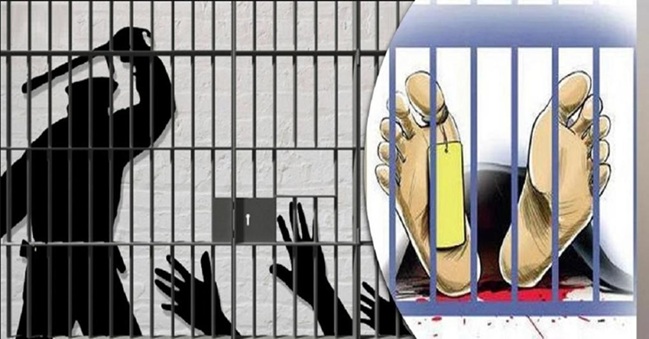UPSC GS–II (Governance, Polity, Welfare, Human Rights)
GS–I (Modern Indian Society & Social Issues) |
Custodial deaths raise serious concerns about India’s law-enforcement system, human rights protection, and constitutional values. Despite Article 21 ensuring the right to life and personal liberty, repeated deaths in custody indicate that urgent reforms are necessary in policing and prison administration.

Meaning and Types of Custodial Deaths
(A) Police Custody Death
- During arrest, interrogation, transfer, torture, illegal detention, or due to medical negligence.
(B) Judicial Custody Death
- Inside prisons due to disease, suicide, violence, overcrowding, lack of medical care, psychological stress, etc.
Major Causes of Custodial Torture and Death
- Reliance on forced confessions
- Absence of a comprehensive Anti-Torture Law
- Prison overcrowding & poor medical facilities
- Lack of independent investigation mechanisms
- Inadequate CCTV coverage and technological oversight
- Poor access to lawyers and legal aid
- Systemic targeting of socially and economically weaker sections
Statistics and Current Situation
- 1,754 custodial deaths in prisons in 2023
(as per the Supreme Court’s Centre for Research & Planning)
- 1,237+ inquiries pending for more than one year → delayed justice & accountability issues
- 11,656 custodial deaths reported between 2016–2022 (data provided in Parliament)
- India signed the UN Convention Against Torture (UNCAT) in 1997 but has not ratified it yet
- → No strong national legislation criminalizing torture
Major Judicial Decisions Related to Custodial Violence
(1) Paramvir Singh Saini vs. Baljit Singh (2020)
- Mandatory installation of CCTV cameras in:
- Police stations, NIA, CBI & other law enforcement offices
- Required features: audio recording, night vision, proper storage
- Mandatory state and district-level oversight committees
- Ensures improved transparency and accountability
(2) D.K. Basu vs. State of West Bengal (1997)
Landmark judgment for human rights safeguards:
- Arrest memo, family notification
- Medical examination every 24 hours
- Legal counsel access
- Mandatory diary entries and custody records
- SOPs against torture
(3) Prakash Singh vs. Union of India (2006)
- State-level Police Complaints Authorities for independent investigation
- Structural police reforms
(4) Shafhi Mohammad vs. State of Himachal Pradesh (2018)
- Mandatory videography of crime scenes
- Creation of a Central Oversight Body (COB)
Constitutional Safeguards
|
Provision
|
Purpose
|
|
Article 14
|
Equality before law
|
|
Article 20(3)
|
Protection against self-incrimination
|
|
Article 21
|
Right to life and personal liberty
|
|
Article 22
|
Article 22 of the Indian Constitution provides protection to individuals against arrest and detention.
It ensures that the arrested person is informed of the reasons for arrest, has the right to consult a lawyer of their choice, and is produced before a magistrate within 24 hours.
It also applies to cases of preventive detention, which have some additional rules, such as requiring the approval of an advisory board for detention exceeding three months.
|
NHRC Guidelines (1993 Onwards)
- Mandatory reporting of custodial death/rape within 24 hours
- Post-mortem, videography & magisterial inquiry
- Compensation and accountability measures
Government Measures and Reforms
- Mandatory CCTV implementation (following SC directives)
- SMART Policing Model (ethical & technology-driven policing)
- Model Police Act, 2006
- Prison reforms (Mulla Committee, Krishna Iyer Committee)
- Fast-track courts for custodial crimes
- Forensic-based investigations
- Human rights sensitization in police training
Persisting Challenges
- CCTV not fully functional across states
- Police Complaints Authorities remain weak
- No dedicated Torture Prevention Law
- High undertrial population in prisons
- Overcrowded and poorly equipped prisons
- Political interference in policing
- Staff shortages & stressful working conditions
- Inadequate forensic infrastructure
The Way Forward
- Ratify UNCAT and enact a stringent Torture Prevention Law
- Full coverage of CCTV & body-worn cameras in custody areas
- Strengthen independent oversight authorities
- Make forensic-based investigation mandatory
- Incorporate human dignity principles in training
- Bail as the norm → reduce undertrial population
- Upgrade prison infrastructure & healthcare facilities
- Ensure swift action and accountability in custodial violence cases
Conclusion
Custodial deaths are not merely a law-and-order problem — they strike at the core of democracy, human dignity, and justice. Without robust reform in policing, prison administration, technological surveillance, and accountability systems, these deaths will continue to undermine Article 21. India must adopt a human-rights-oriented policing model to ensure that the right to life is meaningful, respected, and protected for every individual — even inside custody.


